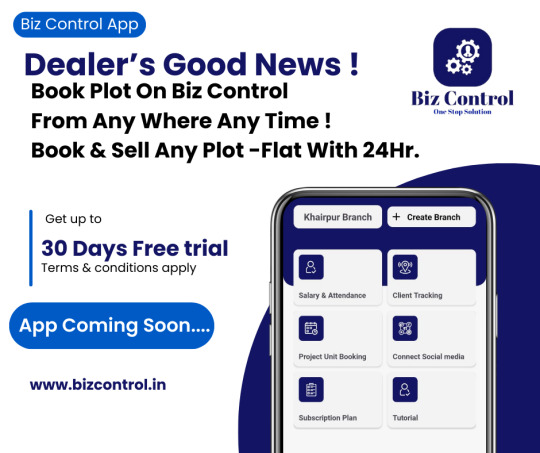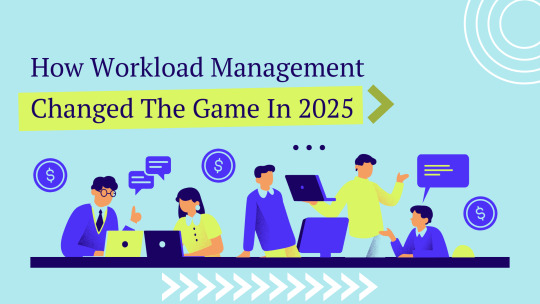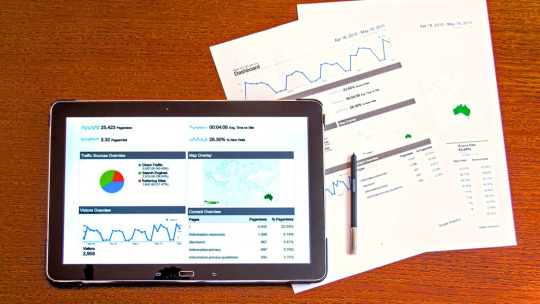#Workforce Management Tool
Explore tagged Tumblr posts
Text
ActivTrak vs. Time Doctor vs. Workstatus: Which Workforce Management Tool Reigns Supreme?
Dive into our comprehensive comparison of ActivTrak, Time Doctor, and Workstatus. This blog post evaluates key features, pricing, and user experiences to help you determine the best workforce management solution for your organization. Discover which tool offers the most effective time tracking, productivity monitoring, and reporting capabilities to enhance your team's efficiency. Make an informed choice for your business's success!
#comparison of ActivTrak#Time Doctor#and Workstatus#Workforce Management Tool#ime tracking#productivity monitoring
0 notes
Text
The Power Of Daily Activity Log : Boost Your Time Management

In this infographic, we will get to know about daily activity log. By keeping an Activity Log for a few days, you can build up an accurate picture of what you do during the day…
#daily activity log#daily work log#log management tools#workforce management software#workforce management tool
0 notes
Text
How a VMS Provider Can Transform Your Vendor Relationships and Sourcing Strategy
In the evolving workforce landscape, businesses are increasingly relying on VMS providers to centralize and streamline how they manage external talent and services. A well-implemented Vendor Management System (VMS) isn't just about tracking spend—it’s about empowering smarter, faster workforce decisions.
Building Strong Vendor Relationships
Effective vendor relationship management is crucial for long-term success. A VMS platform ensures transparency, performance tracking, and communication flow between your company and its suppliers. It strengthens trust, speeds up issue resolution, and encourages accountability—turning vendors into valued partners.
Optimizing Direct Sourcing Strategy
With the right direct sourcing strategy, companies can tap into high-quality talent pools without always relying on third-party staffing agencies. A VMS makes this possible by integrating internal talent databases, leveraging employer branding, and automating key parts of the sourcing workflow—resulting in cost savings and faster hiring.
Conclusion Whether you’re trying to gain more control over your contingent workforce or elevate vendor collaboration, a trusted VMS provider can help streamline vendor relationship management and power an effective direct sourcing strategy that scales with your business.
#contingentworkforce#vendor management software#vendor management solutions#vendormanagement#talentacquisition#vendor management tools#directsourcing#direct hire#contingent worker#vendor management process#vms software workforce#direct sourcing strategy#temporary workforce management software#contingent workforce management software#direct sourcing recruitment#vms platform
0 notes
Text
https://www.bestpeers.com/blog/guide-to-hr-software-features-benefits-pricing.
Ultimate Guide to HR Software: Features, Benefits & Pricing | BestPeers
Explore HR software features, benefits, and pricing. Learn how BestPeers simplifies HR tasks with custom portal solutions. Read the full blog now.
#HR Software Solutions#Workforce Management Tools#Best HR Portal Development#Payroll and Attendance Software#HR Automation for Businesses
0 notes
Text
Switch Smarter: Why Workstatus Is the Best Wrike Alternative
Looking for a more flexible and powerful project management tool than Wrike? Discover how Workstatus helps teams stay organized, productive, and in control. We break down its key features and why it's the best Wrike alternative out there. Level up your workflow today!
0 notes
Text
How To Use Workforce Optimization Software To Build Resilient And Future-Ready Teams

In a rapidly evolving business landscape, the success of any organization depends heavily on the resilience and adaptability of its workforce. Companies are no longer just seeking efficiency—they’re striving to future-proof their teams. That’s where Workforce Optimization Software comes into play.
At Bullseye Engagement, we understand that building a high-performing, future-ready team requires more than just good hiring. It involves data-driven strategies, smart tools, and a continuous focus on improvement. Our advanced Workforce Optimization Software empowers organizations to proactively manage talent, increase agility, and ensure sustainable growth.
In this blog, we’ll dive deep into how your company can leverage workforce optimization solutions to create resilient, future-focused teams ready to meet tomorrow’s challenges.
What Is Workforce Optimization Software?
Workforce Optimization Software is a comprehensive suite of tools designed to maximize employee performance, streamline operations, and align workforce planning with business goals. It typically includes features such as:
Performance management
Scheduling and time tracking
Learning and development
Employee engagement analytics
Resource forecasting and planning
Bullseye Engagement’s solution stands out by integrating all of these capabilities into one intuitive platform—enabling companies to build not just better teams, but stronger futures.
Why Resilience Matters in the Modern Workforce
Workplace resilience refers to a team’s ability to recover from setbacks, adapt to change, and continue to perform under pressure. Resilient teams are not only more productive—they’re also more innovative and collaborative. In a post-pandemic world where remote work, market volatility, and evolving technologies are the new norm, resilience has become non-negotiable.
Future-ready organizations know that investing in technology to support this resilience is key. Workforce Optimization Software is the bridge between traditional workforce management and forward-thinking human capital strategy.
Key Ways Workforce Optimization Software Builds Resilient, Future-Ready Teams
1. Enhancing Visibility Into Workforce Data
With Bullseye Engagement’s Workforce Optimization Software, HR leaders and managers gain a centralized dashboard that provides real-time visibility into workforce performance, capacity, and engagement.
This allows decision-makers to spot trends, identify skill gaps, and take corrective actions before small issues turn into major setbacks. When teams are informed, they’re empowered—and that’s a core pillar of resilience.
2. Streamlining Performance Management
Resilient teams thrive on clarity. That means clear goals, consistent feedback, and well-defined expectations.
Our software streamlines the performance management process with goal-setting tools, progress tracking, 360-degree feedback, and automated review cycles. It enables employees to stay aligned with business objectives while receiving actionable input to grow.
A transparent performance process not only builds trust but ensures everyone remains focused and accountable—even in uncertain times.
3. Fostering Continuous Learning and Upskilling
The future belongs to agile learners. One of the most effective ways to future-proof your workforce is to create a culture of continuous development.
Bullseye Engagement’s platform includes robust learning and development modules that allow companies to deliver personalized training paths, track course completion, and monitor skill progression.
This empowers employees to stay competitive in their roles while preparing for internal advancement opportunities—turning today’s workers into tomorrow’s leaders.
4. Improving Collaboration and Communication
Disjointed communication can quickly derail a team, especially during high-stress or fast-changing situations.
Our Workforce Optimization Software includes tools for peer recognition, team communication, and goal collaboration, ensuring that teams remain connected and engaged—whether working on-site or remotely.
This builds a sense of unity and purpose, strengthening the social fabric of your workforce and enhancing its ability to bounce back from challenges.
5. Supporting Data-Driven Decision-Making
Making workforce decisions based on intuition alone is no longer enough. Today’s HR and operations leaders need data to support workforce planning, training investments, and headcount allocation.
With Bullseye Engagement, you get predictive analytics and powerful reporting features that turn data into strategy. These insights allow you to identify top performers, evaluate team dynamics, and anticipate workforce needs—before they arise.
When your decisions are backed by data, your organization becomes more agile, prepared, and proactive.
How to Implement Workforce Optimization Software Effectively
Adopting Workforce Optimization Software isn’t just about technology—it’s about transformation. Here’s how to make the most of your investment:
1. Define Clear Objectives
Before implementing the software, identify what you hope to achieve. Are you aiming to reduce turnover, improve productivity, or close skill gaps? Set measurable goals to track success.
2. Get Leadership Buy-In
A successful rollout starts at the top. Make sure leaders understand the benefits and are prepared to champion the platform’s use across departments.
3. Train Your Teams
Equip your HR, management, and employees with the knowledge they need to use the platform effectively. Bullseye Engagement offers onboarding support and continuous training to ensure adoption.
4. Monitor and Optimize
Once implemented, monitor platform usage and results. Use built-in analytics to see what’s working and what’s not, then continuously refine your approach.
Future-Proofing with Bullseye Engagement
At Bullseye Engagement, we believe that your people are your greatest asset. Our Workforce Optimization Software is designed to help organizations not only manage their teams but unlock their full potential.
Whether you're navigating remote work, preparing for expansion, or simply striving to build a better company culture, our platform gives you the tools to do so with confidence.
Final Thoughts
Building a resilient, future-ready team doesn’t happen by chance—it takes deliberate effort, the right strategies, and powerful tools. Workforce Optimization Software is more than just a management tool; it’s a foundation for long-term growth and adaptability.
With Bullseye Engagement, you gain more than software—you gain a strategic partner committed to helping you transform your workforce into a dynamic, empowered, and forward-thinking team.
The future of work is here. Is your team ready?
For more info Contact us : (888) 515-0099 or Email : [email protected]
#Workforce Planning software#Workforce Management Software#Workforce Planning System#Workforce Management Tools#Workforce Planning Platform#Workforce Optimization Software
0 notes
Text
Is Your HR Still Stuck in the Past? Discover the Oracle HCM Cloud Advantage
The Hidden Cost of Outdated HR Systems
Most businesses don’t realize it, but old-school HR systems are costing them more than just time—they’re draining productivity, damaging employee experience, and stalling growth.
Whether it’s juggling multiple platforms, manually tracking performance, or dealing with compliance chaos, outdated HR practices are a silent killer of workplace efficiency.

Enter Oracle HCM Cloud – The Game Changer
Oracle HCM (Human Capital Management) Cloud isn’t just software—it’s a full-blown digital HR transformation engine. It brings all your HR functions—core HR, payroll, recruitment, learning, performance, and more—into one intelligent cloud-based platform.
🚀 Key Benefits:
Centralized HR operations
Smart automation with AI & ML
Mobile-friendly, self-service features
Real-time analytics & compliance insights
Scalable for small teams or large enterprises
Why Businesses Are Switching to Oracle HCM Cloud
Faster Hiring AI-powered candidate recommendations reduce time-to-hire by up to 30%.
Better Engagement Self-service portals and mobile apps improve employee satisfaction and retention.
Strategic HR Decisions HR teams can finally go from reactive to proactive with predictive analytics and workforce trends.
Remote-Ready Oracle HCM is designed for hybrid and global teams, making it the ideal tool in today’s remote work era.
Use Case: A Mid-Sized Business, Big-Time Transformation
One mid-sized IT firm moved from Excel-based payroll to Oracle HCM Cloud and saw a 40% drop in payroll errors and 50% faster onboarding—all within the first quarter.
Final Thoughts: The Future of HR is Here
If you’re still relying on legacy systems, you’re not just behind—you’re missing out. Oracle HCM Cloud is the smarter, faster, and more strategic way to manage your most valuable asset: your people.
✅ Ready to Upgrade Your HR Strategy?
At Avion Technology, we help businesses implement and optimize Oracle HCM Cloud for real results. Whether you’re just starting or scaling your HR operations, our experts are here to guide your digital HR transformation.
👉 Contact today to explore how Oracle HCM can reshape your workforce management.
#Oracle HCM#Cloud HR#HR Software#Oracle HR Cloud#Digital HR Solutions#HCM Platform#Remote Workforce HR#Smart HR Tools#AI HR Software#Human Capital Management
0 notes
Text
The Role of People Analytics in Modern Management
No aspect of modern management moves ahead without making data-driven decisions. What’s more, the organisations of today are leveraging people analytics to optimise employee performance, improve employee engagement and bank on strategically created decision-making. That said, with access to the right tools, organisations can evaluate their own workforce, the current workforce trends, predict future needs and requirements and even boost overall efficiency. This blog further writes and showcases how people analytics is designed to model management strategies and revolutionise HR systems.
Absorbing & Digesting People Analytics in Management
People analytics is defined as the practice of using received data to measure, deeply analyse and improve the performance of your workforce. By gathering the accumulated insights from the HR on employees’ productivity, engagement and retention, organisations can make better and informed decisions that can lead to elevated business outcomes. Traditionally HR management used intuition and qualities, but the current workforce analytics enables leaders of companies to take advantage of hard data and use it to build as well as enhance strategic workforce planning strategies.
Organisations that employ these same workforce planning strategies are able to foresee incoming challenges, track the performance and create adaptable and actionable solutions. Multinational companies such as Google and Microsoft are already utilising employee analytics to polish their hiring, training and retention processes.
Decision-making That Is Driven By Data
Effective leadership today also depends how well the data-driven decision-making is. As mentioned above, by utilising HR analytics tools, companies are well-equipped to gain beneficial insights into employee conduct, performance, satisfaction and productivity levels. All of them help the manager make cognisant decisions rather than putting their faith on guesswork or subjective written or oral opinions.
For example, companies that proactively track employee engagement metrics can identify signs of burnout in the early stages and take measures at once. As per a study by Gallup, organisations with highly engaged employees experience a 23% jump in profitability. Workforce analytics help businesses understand which specific factors contribute to employee satisfaction and enable them to implement strategies which heighten motivation and retention.
Key Areas Where People Analytics Make a Striking Impact
Performance Analytics – Employees Calculating employee performance is no longer limited to annual reviews only. Organisations now have complete access to real-time performance metrics to track productivity status and identify areas of improvement. Performance analytics includes accessing key indicators such as completion rates, project efficiency and overall company objectives.
Planning Strategies – Workforce Ensuring that the right talent is in position to meet the desired business objective is workforce planning. People analytics assist organisations to anticipate future hiring needs, assess skill gaps and allocate resources accordingly and effectively.By methodically analysing turnover rates, recruitment trends and employee capabilities, companies have everything that is needed to create long-term workforce planning strategies. For example, a company facing high attrition rates in a specific department of their workforce can use HR data insights to find underlying issues and develop targeted strategies accordingly.
HR Data Insights – Talent Acquisition Business success comes down to hiring the right talent. Talent analytics strategies allow recruiters to recognise top candidates based on past hiring data, skills and their assessments and behavioural insights. With AI booming, AI-driven analytical tools have developed the capacity to analyse resumes, previous job performances and interview reviews to answer which candidates will fit the role perfectly. This can reduce hiring bias and improves the quality of the new hires. Companies such as Amazon use prognostic hiring models to match candidates with job roles that align with their skills and career goals.
Employee Engagement & Retention - Enhancement A motivated workforce is a productive workforce. People analytics in employee management helps organisations to observe employee engagement levels through pulse surveys, sentiment analysis and feedback tools.If it reveals that there’s a certain drop in engagement of certain teams, HR can follow-up with immediate action. Whether it is by addressing workplace or cultural problems, providing professional development programs or re-adjusting assigned workloads. Research by Harvard Business Review found that companies using people analytics for engagement see a 31% reduction in employee turnover.
The Future of People Analytics in Management
As technology continues to advance, the role of people analytics in management will become even more significant. Future trends include:
AI & Machine Learning Integration: With AI rising beyond expectations, AI-powered workforce analytics will enable prognostic modelling, helping companies to anticipate workforce trends and make proactive decisions.
Real-Time Employee Feedback: Businesses will implement AI-driven sentiment analysis tools to gauge employee satisfaction in real-time.
Remote Work Analytics: With hybrid and remote work becoming the norm, people analytics will help organizations optimise productivity and engagement for distributed teams.
Diversity & Inclusion Metrics: Companies will leverage HR data insights to track and improve diversity, equity and inclusion (DEI) initiatives.
How Can Organisations Make Use Of People Analytics Effectively
To successfully utilise the maximum potential of People Analytics, organisations should follow the following steps:
Invest in HR analytical tools that offer comprehensive analytical solutions.
Establish clear Key Performance Indicators (KPIs) that align accurately with your business objectives.
Train HR and Managers to interpret data and apply insights effectively.
Ensure Data Privacy and Compliance to preserve ethical standards while adhering to data protection regulations.
Foster a Data-driven Culture where decisions are taken after being informed by analytic tools rather than intuition alone.
Coming To The Conclusion
The integration of people analytics in management is transforming how organisations make decisions about talent, performance and engagement. By leveraging workforce analytics and HR data insights, companies can drive productivity, enhance employee experience, and develop more effective workforce planning strategies.
Data-driven decision-making is no longer optional, it’s essential for staying competitive in today’s business environment. As technology continues to evolve, organisations that embrace people analytics will without a doubt be better equipped to steer workforce challenges and build a thriving, engaged workforce.
Are you ready to harness the power of people analytics in your organization? Start implementing the right HR analytics tools today and unlock the full potential of your workforce.
0 notes
Text
lov111vol
LOV111VOL is a modern application that effectively replaces employee time tracking registration in your company. It works 50 seconds after downloading and offers the same features as traditional employee time tracking registration, plus many other useful tools. With LOV111VOL, employee working hours are precisely recorded and managed, making processes in the company simpler and more efficient. The application is suitable for both individual and team work, supporting digital management of employee working hours.
#employee time tracking#work hours tracker#attendance management system#timesheet software#workforce scheduling tool
1 note
·
View note
Text
The world is transitioning toward renewable energy unprecedentedly, with solar power leading the charge. The solar industry is pivotal in achieving global sustainability goals, accounting for nearly 60% of new global renewable energy capacity. However, this rapid expansion also brings unique challenges, particularly in managing a vast and dispersed field workforce. In this blog, we’ll explore the importance of field force management solutions in addressing these challenges and how they enable solar companies to streamline operations, enhance productivity, and achieve their growth objectives. Towards the conclusion, we’ll introduce IMPRINT, a field force management tool that has proven to be a game-changer in this space.
#Enhancing Solar Workforce Efficiency#Field Force Management Solutions#Field Operations Software#GPS Tracking for Solar Teams#Maintenance Solutions for Solar Businesses#Solar Industry Digital Transformation#Solar Industry Success#Solar Maintenance Solutions#Solar Installation Optimization#Solar Panel Installation Tools
1 note
·
View note
Text
Automatisasi Bisnis dengan Kekuatan AI
Automatisasi bisnis telah menjadi topik utama dalam dunia usaha modern. Dengan kemajuan teknologi kecerdasan buatan (AI), perusahaan kini memiliki peluang untuk mengoptimalkan proses mereka, meningkatkan efisiensi, dan mengurangi biaya operasional. AI tidak hanya menggantikan tugas-tugas manual yang berulang tetapi juga membawa kemampuan analisis data yang canggih, prediksi yang akurat, dan…
#AI automation#AI benefits#AI challenges#AI in banking#AI in business#AI in logistics#AI in retail#AI training#AI trends 2024#AI-powered tools#artificial intelligence#business automation#business innovation#cost reduction#customer experience#ethical AI#future of AI#operational efficiency#predictive analytics#scalable solutions#smart inventory management#supply chain management#workforce automation
0 notes
Text
Biz Control: Empowering Businesses with Smarter, Streamlined Solutions

Visit our website: Biz Control Official Website
In today’s competitive landscape, businesses are under constant pressure to enhance efficiency, cut costs, and deliver superior services. The solution? Smarter management tools that simplify operations and empower teams. Biz Control, a revolutionary business management platform, is designed to do just that.
With a focus on innovation and adaptability, Biz Control delivers tailored solutions for businesses across various industries, helping them stay ahead of the curve.
Learn more: Biz Control Homepage
What Makes Biz Control a Game-Changer?
Biz Control combines the power of technology with user-friendly design to create an all-in-one business management solution. Whether you’re managing real estate transactions, tracking employee attendance, or nurturing customer relationships, Biz Control offers the tools you need to operate smarter and grow faster.
Key Features of Biz Control
1. Real Estate Management
Biz Control is redefining real estate management. Its unique features allow:
Direct Unit Bookings: Make bookings anytime, from any location.
Property Dealer Facilitation: Property dealers can buy or sell units for clients directly through the platform, eliminating the need for on-site visits.
2. HR & Salary/Attendance System
Efficiently manage your workforce with tools that:
Automate Attendance Tracking: Capture employee attendance with just one click.
Generate Salaries Seamlessly: Simplify payroll processing while reducing errors.
Optimize HR Workflows: Save time and focus on strategic HR initiatives.
3. Customer Relationship Management (CRM)
Strengthen customer connections with tools to:
Track Leads and Opportunities: Never miss a potential deal.
Enhance Communication: Stay connected with customers through centralized data.
Leverage Analytics: Use insights to make informed decisions.
Why Businesses Love Biz Control
Customizable for Every Industry: Tailored solutions for unique business challenges.
Cloud-Based Accessibility: Work from anywhere, anytime.
User-Friendly Interface: Easy to adopt and navigate, even for non-tech-savvy users.
Scalable for Growth: Designed to grow alongside your business.
How Biz Control Transforms Your Business
With Biz Control, you can:
Simplify day-to-day operations.
Minimize manual errors and reduce costs.
Gain real-time insights into business performance.
Free up time for strategic decision-making.
Join the Biz Control Revolution
It’s time to say goodbye to outdated systems and embrace smarter, streamlined solutions. With Biz Control, your business can achieve unmatched efficiency, productivity, and growth.
Ready to transform your operations?
Visit us today: www.bizcontrol.in
#**Tags for Biz Control:**#- Business Management Software#- All-in-One Business Solution#- Real Estate Management#- HR and Payroll Automation#- Attendance Management System#- CRM Software#- Smart Business Solutions#- Cloud-Based Business Tools#- Employee Management System#- Customer Relationship Management#- Property Dealer Software#- Streamlined Business Operations#- Business Productivity Tools#- Workforce Management#- Digital Business Solutions#- Innovative Business Tools#- Enterprise Management Software#- Small Business Management App#- Automated Business Processes#- Smarter Business Operations
0 notes
Text
Optimizing Human Resources with Dynamics 365: The Key to Streamlined Workforce Management
In today’s competitive business environment, managing human resources effectively is more critical than ever. Dynamics 365 offers a transformative approach to workforce management by integrating advanced technologies with intuitive tools designed to enhance efficiency and drive employee engagement.
Why Dynamics 365 for HR Management?
Microsoft Dynamics 365 goes beyond conventional HR systems by merging automation, AI-driven insights, and seamless integrations. It empowers organisations to optimise recruitment, enhance employee experiences, and align workforce goals with broader business objectives.

Key benefits of implementing Dynamics 365 for HR include:
Unified HR Processes Dynamics 365 centralises all HR operations—recruitment, onboarding, payroll, and performance reviews—into a single platform. This unification eliminates silos, streamlines workflows, and enhances collaboration across departments.
AI-Powered Recruitment and Talent Acquisition By leveraging artificial intelligence, Dynamics 365 improves candidate screening, predicts role fitment, and speeds up hiring decisions. The system helps HR teams identify top talent faster, reducing time-to-hire while ensuring quality recruitment.
Enhanced Employee Engagement Personalised employee experiences are crucial for retention. Dynamics 365 offers self-service portals, training modules, and real-time feedback mechanisms, fostering a positive work environment and ensuring professional growth.
Data-Driven Decision-Making Advanced analytics within Dynamics 365 provide actionable insights into workforce trends, employee performance, and resource allocation. These insights enable leaders to make informed decisions that align with business goals.
Scalability and Integration Dynamics 365 seamlessly integrates with other Microsoft tools such as Teams, Power BI, and SharePoint, ensuring scalability and adaptability for businesses of all sizes.
How Dynamics 365 Addresses Workforce Challenges
Modern HR teams face challenges such as remote work management, diverse workforce needs, and regulatory compliance. Dynamics 365 provides:
Remote Work Enablement: Tools for virtual collaboration and performance tracking ensure productivity regardless of location.
Compliance Automation: Simplifies adherence to global HR regulations through automated updates and audits.
Customised Dashboards: Tailored insights help HR teams monitor KPIs, from employee satisfaction to productivity metrics.
Conclusion: Transforming HR with Dynamics 365
Adopting Dynamics 365 for human resource management is a strategic step towards building a resilient, motivated, and future-ready workforce. By streamlining HR operations, leveraging data-driven insights, and fostering a culture of engagement, businesses can unlock their full potential.
Invest in the power of Dynamics 365 today and redefine workforce management for the digital age.
#Dynamics 365 for HR#workforce management software#AI-powered recruitment#HR process optimisation#employee engagement tools#data-driven HR solutions.
0 notes
Text
Transforming Talent Strategy with a VMS System and Direct Sourcing Recruitment

The way organizations manage their workforce is evolving. With more companies leaning on flexible labor models, managing the VMS contingent workforce efficiently has become a strategic priority. As businesses seek smarter ways to control costs, improve visibility, and accelerate hiring, a modern VMS system offers the perfect solution.
What Is a VMS System?
A Vendor Management System (VMS) is a software platform designed to manage the procurement, onboarding, compliance, and performance tracking of external workers — including freelancers, consultants, and contractors.
With a VMS system, companies can:
Streamline vendor and contingent workforce management
Automate compliance and risk controls
Gain full visibility into spend and performance
Improve collaboration across HR, procurement, and legal teams
For organizations managing a contingent workforce, this system brings scalability, accountability, and data-driven decision-making.
Direct Sourcing Recruitment: The Future of Talent Acquisition
As part of a broader contingent strategy, direct sourcing recruitment is gaining traction. It enables companies to build and maintain private talent pools — often made up of previous contractors, referred talent, and silver-medal candidates — and engage them directly without going through third-party staffing agencies.
Benefits of direct sourcing include:
Faster hiring timelines
Reduced recruitment costs
Better quality talent
Stronger relationships with contractors
When integrated into a VMS system, direct sourcing becomes even more powerful — giving talent acquisition teams a proactive, cost-effective edge in competitive markets.
Conclusion
Managing a flexible workforce requires more than just tracking timesheets — it demands a strategic, tech-enabled approach. By combining the strength of a VMS contingent workforce platform with direct sourcing recruitment, organizations can future-proof their workforce model and build a more responsive, agile business.
Mastering SOW Management: A Complete Guide to Successful Project Execution
Contingent Workforce Program: A Comprehensive Guide
[Guide]: Impact of AI on Vendor Management Technology
5 Strategies to Build Your Own Talent Pool Management: A Comprehensive Guide
#contingentworkforce#vendor management software#vendor management process#vendor management tools#direct hire#direct sourcing recruitment#vendormanagement#vendor management solutions#vms contingent workforce#hr software
0 notes
Text
The Evolution of HR Technology: A Look at Modern HRMS
The landscape of human resource management has undergone a significant transformation over the years. From manual processes and paper records to sophisticated Human Resource Management Systems (HRMS), technology has revolutionized the way HR functions. Here's a look at how HR technology has evolved and why modern HRMS solutions are game-changers for businesses.
The Early Days of HR Technology
Initially, HR tasks were heavily dependent on manual processes. Payroll calculations, employee records, and recruitment were managed through spreadsheets and paper files. While this approach worked, it was time-consuming, prone to errors, and inefficient for scaling businesses.
The Rise of HR Software Solutions
In the 1990s, the introduction of basic HR software paved the way for automation in payroll, attendance tracking, and record-keeping. These systems significantly reduced administrative workload but were often standalone solutions, lacking integration and advanced functionality.
Modern HRMS: An All-in-One Solution
Today, HRMS represents a holistic approach to human resource management, combining multiple functionalities into a unified platform. These systems are designed to streamline and automate complex HR tasks, improve efficiency, and enhance the employee experience.
Key Features of Modern HRMS
Employee Data Management: Centralized storage of employee information for easy access and updates.
Payroll and Benefits Administration: Automation of salary processing, tax calculations, and benefits management.
Recruitment and Onboarding: Tools for posting job ads, tracking candidates, and onboarding new hires seamlessly.
Performance Management: Advanced analytics for tracking employee performance and setting development goals.
Employee Self-Service Portals: Empowering employees to manage their own leave, attendance, and personal details.
Compliance Tracking: Ensuring adherence to labor laws and regulations with minimal manual effort.
Integration with Other Tools: Compatibility with third-party applications for enhanced functionality.
Benefits of Modern HRMS
Efficiency and Productivity: Automation reduces repetitive tasks, freeing up HR professionals for strategic planning.
Data-Driven Decision Making: Advanced analytics provide insights into workforce trends and performance metrics.
Improved Employee Engagement: Self-service features and streamlined processes enhance employee satisfaction.
Scalability: Modern HRMS platforms are designed to grow with the organization, making them ideal for businesses of all sizes.
Future Trends in HR Technology
As technology continues to evolve, HRMS is expected to integrate more advanced features, such as:
Artificial Intelligence (AI): Predictive analytics for hiring, retention, and employee development.
Mobile-First Solutions: Ensuring accessibility on the go.
Enhanced Employee Wellness Tools: Integrating mental health and wellness tracking into HR systems.
Conclusion
The evolution of HR technology from manual processes to modern HRMS has been a transformative journey. Today’s HRMS solutions empower organizations to manage their workforce efficiently while fostering a better workplace environment. Investing in the right HRMS is not just a technological upgrade—it’s a strategic move towards building a smarter and more agile organization.
More info: https://ahalts.com/solutions/hr-services

#HR technology#HRMS evolution#Modern HR systems#HR automation#Workforce management#Employee management tools#HR software trends#Human resource innovation#Payroll automation#HR analytics#HR compliance#Recruitment technology#Employee engagement#HRIS vs. HRMS
0 notes
Text
How Workload Management Changed The Game In 2025

In 2025, managing workload has transcended its traditional role, evolving into a strategic cornerstone for organizational success. As businesses struggle with increasing demands and the complexities of a hybrid workforce, the need for an effective management plan has never been more critical. Advanced technologies, such as AI-driven tools and data analytics, have revolutionized how organizations allocate resources, monitor productivity, and adapt to shifting market dynamics.
This transformation is not merely about optimizing efficiency; it also emphasizes employee well-being, promoting work-life balance, and preventing burnout.
In this article, we will explore how these changes have fundamentally reshaped workload management, fostering a culture of innovation and resilience that empowers organizations to thrive in an increasingly competitive landscape.
The Rise of Advanced Workload Management Tools

Modern technology has completely changed the workload control scene. The days of using simple project management software and manual spreadsheets are long gone. By 2025, businesses will be using advanced AI-powered task management systems that offer real-time information on team output and project status. These tools can analyze data, predict bottlenecks, and optimize task assignments, ensuring that resources are utilized effectively.
Prioritizing Employee Well-Being
By 2025, businesses will have implemented flexible work arrangements that let workers set their own hours and handle their assignments.
The management system includes features that help employees set boundaries and avoid burnout. By encouraging employees to take breaks and manage their time effectively, organizations are seeing increased job satisfaction and retention rates. Happy employees are more productive, and this new approach to team management is a testament to that truth.
Data-Driven Decision Making

In 2025, data is the new gold. Organizations are harnessing the power of analytics to inform their management strategies. By tracking key performance indicators (KPIs), businesses can make informed decisions about resource allocation, project timelines, and team performance.
For example, a software development company might analyze data from past projects to identify patterns in productivity. This insight allows them to make data-driven decisions when planning future projects, ensuring that workloads are realistic and achievable. By relying on analytics, organizations are not only optimizing their operations but also fostering a culture of continuous improvement.
Embracing Agile Methodologies
By 2025, workload control has fully embraced agile methodologies, allowing teams to respond quickly to changing market conditions and customer needs. Agile frameworks promote iterative work processes, enabling teams to break projects into manageable chunks and adjust their strategies on the fly.
This flexibility is especially beneficial in industries where innovation is key. For example, in the tech industry, companies can quickly pivot their projects based on user feedback, ensuring that their products remain relevant and competitive.
The Role of Remote Work

By 2025, companies have adapted to a hybrid work model that combines in-office and remote work, requiring new strategies for managing workload.
These tools integrate seamlessly with communication platforms, allowing remote teams to collaborate effectively. Features such as task assignments, deadline tracking, and progress updates are all accessible from anywhere, ensuring that team members stay connected and informed, regardless of location.
Enhancing Team Collaboration
In 2025, the importance of collaboration in management cannot be overstated. Advanced tools facilitate seamless communication between team members, breaking down silos and promoting cross-functional collaboration.
With integrated platforms, teams can easily share updates, seek feedback, and collaborate on projects in real-time.
Also, watch this video - How To Manage & Monitor Employees Working In Multiple Shift
youtube
Final Thoughts
The transformation of team workload management by 2025 signifies a new era for organizations. By embracing advanced tools, prioritizing employee well-being, leveraging data, adopting agile methodologies, adapting to remote work, and enhancing collaboration, companies are positioning themselves for success in an increasingly competitive landscape. It is obvious that efficient management will remain a key component in promoting both employee satisfaction and organizational performance as we go forward.
#workload management#employee dissatisfaction#team workload#workload management tools#workforce management#Youtube
0 notes